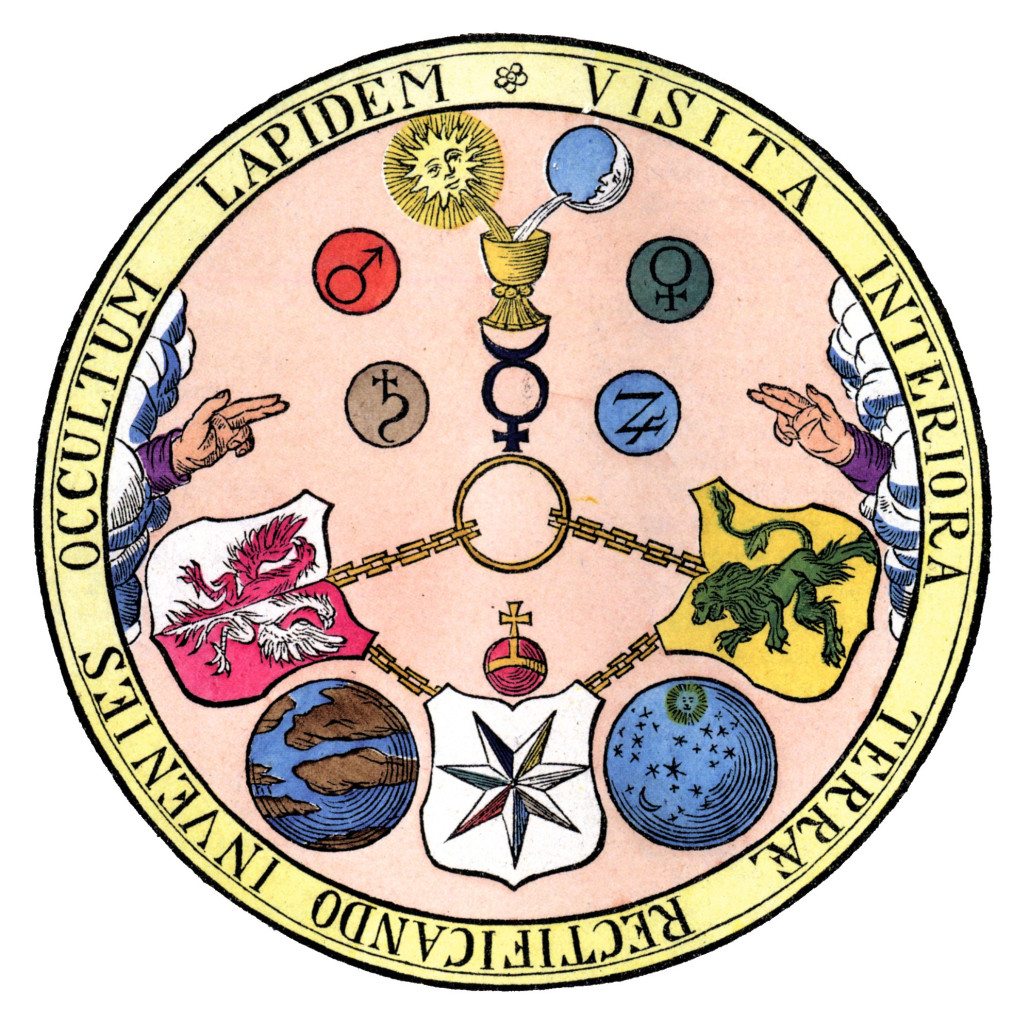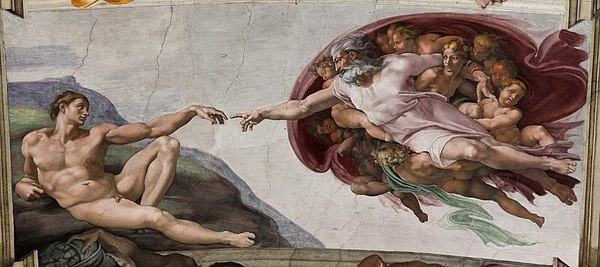Masonic Articles and Essays
Part I: What Esoteric Knowledge lies veiled in Classical Art?
Bro... Elaine Phelen 3o
Date Published:
3/29/2021
IN this two-part series, the author seeks to guide the reader to uncover the hidden meaning found in the artistic works of numerous Masters, including Michelangelo, Pieter Bruegel the Elder, William Blake, Georges de La Tour, and Raphael. First, by outlining a basic structure for analyzing art through an esoteric lens; thereby, utilizing both observation and intuition, symbolically represented by the concrete and abstract minds.
AN enduring cornerstone of Western Civilization, Classical Art builds on the cultural ideals of Ancient Greece and Rome, as demonstrated in painting, sculpture, and architecture. Founded upon the virtues of harmony and divine proportion, these artists sought to elevate the human form by adorning it with the highest, illuminating humanity’s evolution and depicting man’s relationship with the Divine. For more than a Millenia, classical artistic expression has been shaped by the reverence of the virtuous, the good, and the beautiful. In Manly P. Hall’s work, The Secret Teachings of All Ages, we learn:
“Symbolism is the language of the Mysteries; in fact, it is the language not only of mysticism and philosophy but of all Nature, for every law and power active in universal procedure is manifested to the limited sense perceptions of man through the medium of symbol… By symbols men have ever sought to communicate to each other those thoughts which transcend the limitations of language.” ~ Manly P. Hall
Does symbolism transcend the limitations of language? Is a picture worth a thousand words?
CRYPTIC, ABSTRUSE, MYSTERIOUS: WHAT DOES “ESOTERIC” REALLY MEAN?
 THE term, Esoteric, has been defined as “known only to the few,” and is derived from the Greek root Eso, meaning “within.” To study Esotericism often requires communing with a small inner circle of learned fellows in order to embark on a journey of self-discovery. The opposite of esoteric is exoteric, meaning “suitable to be imparted to the public,” and historically linked to the ancient philosopher Aristotle. Those deemed worthy to attend Aristotle’s private discussions were known as his “esoterics,” or confidants.
THE term, Esoteric, has been defined as “known only to the few,” and is derived from the Greek root Eso, meaning “within.” To study Esotericism often requires communing with a small inner circle of learned fellows in order to embark on a journey of self-discovery. The opposite of esoteric is exoteric, meaning “suitable to be imparted to the public,” and historically linked to the ancient philosopher Aristotle. Those deemed worthy to attend Aristotle’s private discussions were known as his “esoterics,” or confidants.
Whereas, the “exoterics” were individuals who only attended Aristotle’s popular evening lectures. Because such information is largely incomprehensible to the general population, esoteric is sometimes erroneously equated with that which is difficult to understand. Instead, esoteric scholars are typically empowered by exceptional methods of education, such as hyper-specialized training, private tutoring, intensive study, or initiation.
Most religions provide exoteric or fundamental teachings, as well as, a path of esoteric study for those who seek it. Perhaps it could be said that once a fundamental understanding of the tenants of a religion is obtained, a door swings open providing the seeker a deeper level of wisdom and understanding. In Christianity, the Apostle Paul wrote:
“And I, brethren, could not speak unto you as unto spiritual, but as unto carnal, even as unto babes in Christ. I have fed you with milk, and not with meat: for hitherto ye were not able to bear it, neither yet now are ye able.” ~ 1 Corinthians 3: 1-2
This dichotomy of basic and advanced study exists within other religions such as Islam, where Sufism serves as the esoteric branch of the religion. Freemasonry provides similar esoteric instruction to members of all religious faiths. What is the difference between esoteric and exoteric knowledge? Does one need to be an initiate to study esotericism?
WHAT LIES HIDDEN? VIEWING ART THROUGH AN ESOTERIC LENS
IN this series, we seek to uncover the hidden meaning found in the artistic works of numerous Masters, including Michelangelo, Pieter Bruegel the Elder, William Blake, Georges de La Tour, and Raphael. Let us begin the discussion by outlining a basic structure for analyzing art through an esoteric lens; thereby, we will utilize both observation and intuition, symbolically represented by the concrete and abstract minds.
OBSERVATION: Observe the work of art and search for the following:
- Inconsistencies
- Patterns
- Clues
INTUITION: What does your intuition tell us about this art?
Many people think of intuition as instinctual or even magical. Our intuitive hunches, however, are assumptions formed based on experience and cumulative knowledge. They tend to arise holistically and quickly, without conscious awareness of the underlying mental process of information. Intuition is nonconscious thinking; essentially, the brain on autopilot. Scientists have repeatedly demonstrated how information can register on the brain without conscious awareness and positively influence decision-making. How are observation and intuition different? Does each correspond to a different hemisphere of the brain?
THE CREATION OF ADAM BY MICHELANGELO
TO begin, The Creation of Adam has long been recognized as one of the world’s great art treasures. From 1508 to 1512, the Italian Renaissance Master, Michelangelo Buonarroti, painted glorious frescoes, including The Creation of Adam, on the ceiling of the Vatican’s Sistine Chapel, as commissioned by Pope Julius II. Michelangelo wrote the following describing the artistic process:
“After the divine part has well-conceived,
Man’s face and gesture, soon both mind and hand,
With a cheap model, first, at their command,
Give life to stone, but this is not achieved
By skill. In painting, too, this is perceived:
Only after the intellect has planned
The best and highest, can the ready hand
Take up the brush and try all things received.”
~ Michelangelo

What can be unveiled regarding The Creation of Adam through observation and intuition? Perhaps, the unique relationship between man and God, mortal and immortal, body and mind? When one notices the imagery of the brain-like shell surrounding God, we can begin to see the wisdom in Freemasonry's focus on symbolism as an integral introductory step to its mysteries. The mind must be trained to see with correct vision, particularly to draw aside the veil of esotericism.
To be continued in Part II….
More Masonic Articles
Explore articles and essays written by Freemasons about Freemasonry.
Read More
Membership
Interested in becoming a member of the worlds oldest Fraternal organization?
Read More